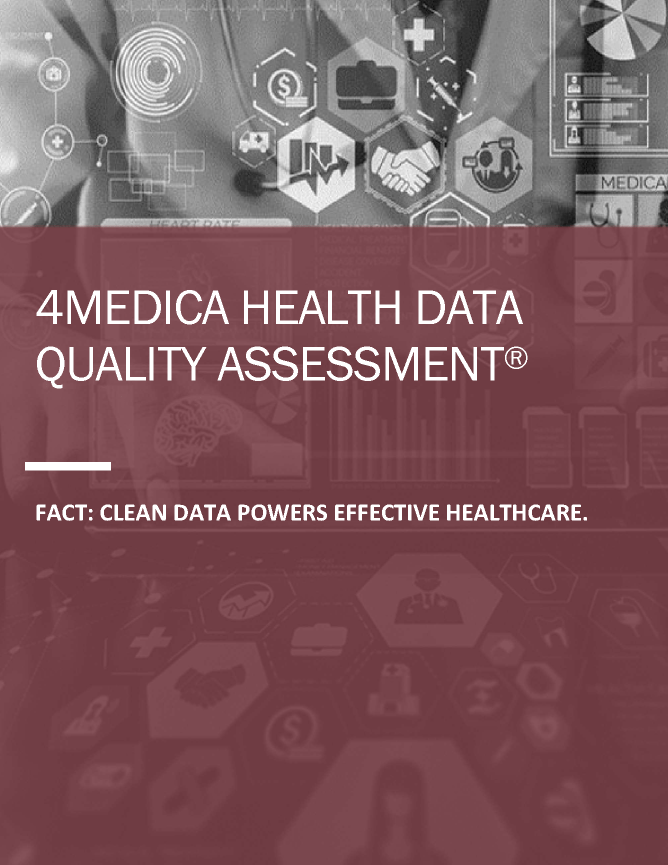Poor data quality undermines the efforts of healthcare organizations to provide people with the best care and to get the most value out of their data. Even something as basic as matching a patient to the right medical records can be extremely difficult.
The reason provider and payer organizations struggle with patient matching is clear: Lack of a national patient ID. The American Medical Association and other medical organizations long have advocated for a universal patient identifier (UPI), but Congress in January rejected a bid to lift a ban imposed in 1999 on funding to promote or implement a national patient ID. Without a UPI on which to rely, hospitals, clinics, labs, imaging centers, specialist groups, behavioral health practices and other providers end up creating their own unique medical record number for each patient.

If a patient sees a primary care provider in one city and then relocates, that patient’s new provider group will create its own medical record – which may not have the same data used to identify the patient as the previous provider. The lab where the patient underwent tests also may have a separate medical file for the patient.
These duplicate patient records are fed into the databases of health information exchanges or transmitted from one provider to another. As a result, any authorized entity accessing a patient’s medical records may not get the full picture because they are unaware there are duplicate records with different information on that patient.
When patient data is siloed, it can lead to clinicians making point-of-care decisions based on incomplete or inaccurate information. And that both endangers patients and increases the costs of care. A 2021 Black Book research survey revealed that patient ID errors cost nearly $2,000 per inpatient stay and more than $1,700 per emergency department visit. On an annual basis, patient misidentification costs the average hospital $2.5 million and the U.S. healthcare system $6.7 billion, Black Book writes.
If your healthcare organization doesn’t have a master patient index (MPI) looking at multiple incoming data feeds containing different medical record numbers for a patient to verify, it’s virtually impossible to successfully match patients to their full and accurate records. Even within a single hospital or medical center, the facility’s lab or radiology center may have different identifiers for a patient.
To identify and address problematic data sources and flag invalid patient identification attributes, it’s critical that healthcare organizations have the ability to quickly assess what patient information is valid in the data sets streaming into and throughout their electronic health record (EHR) systems. One way to do this is to use probabilistic algorithms that assign weighted value to identifying attributes.
For example, the organization may put a heavier scoring weight on date of birth and phone number because there is more consistency and more accuracy in those patient identifiers from that particular data source. But in some data sets, phone numbers may not be accurately collected because that data source serves a more transient population. In those cases, healthcare organizations should put a lower scoring weight on phone numbers.
The essential data quality KPIs
To accurately identify patients and match them with their records, healthcare organizations should focus on four key performance indicators (KPIs):

1. Duplicate patient record rate
This metric measures the percentage of duplicate patient records within the organization’s database. It reflects the accuracy and effectiveness of patient matching processes. The goal is to reduce the duplicate record rate to less than 1% through improved data quality practices.
2. Name accuracy rate
As basic as it may seem, patients’ first and last names aren’t always recorded accurately or consistently by different healthcare organizations. The slightest variations in spelling, use of initials in lieu of full names, or inconsistent inclusion of middle names can result in duplicate patient records not being identified and fixed.
This KPI assesses the accuracy and consistency of patients’ first and last names recorded by different healthcare organizations. It measures the percentage of correctly recorded names, accounting for spelling variations, initials, and middle names. The objective is to achieve a high name accuracy rate to avoid creating duplicate patient records.
3. Date of birth matching rate
Patients today commonly are asked for their date of birth when they visit a healthcare provider or contact a payer. If the date of birth listed in a healthcare organization’s files doesn’t match the date given by the patient, that organization may choose not to provide services.
Using this KPI allows organizations to evaluate the consistency of patients’ date of birth across different healthcare providers. It measures the percentage of matches between the date of birth provided by the patient and the date recorded in the organization’s files. The goal is to ensure a high matching rate, minimizing errors and potential service denials due to mismatched data.
4. Phone number/mailing address consistency rate
The accuracy and consistency of patients’ phone numbers or mailing addresses is the fourth patient identification KPI. It measures the percentage of cases where special characters, formatting, or data structure variations impact the ability to match and update patient information accurately. The purpose is to maintain a high consistency rate by implementing standardized formats and data entry practices.
Accurate patient data means improved patient safety and cost savings
These four KPIs align with the importance of accurate patient data for improved patient safety and cost savings. Tracking these metrics enables healthcare organizations to identify data quality issues, implement corrective measures, and enhance their overall data management processes.
With the right MPI platform, software tools, and processes, healthcare organizations can reduce duplicate rates from 20% and more to less than 1%. Better quality data translates into better patient outcomes, greater operational efficiency, and lower healthcare costs. It all starts with the ability to accurately identify patients.
This article was originally published on Healthcare Business News. View article here.

